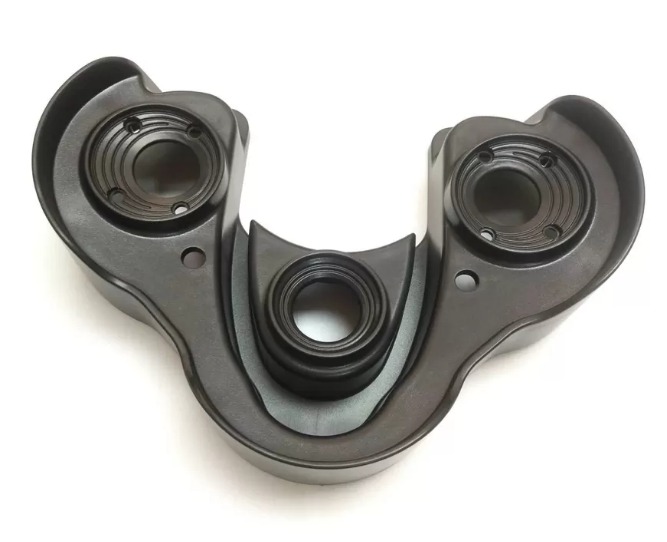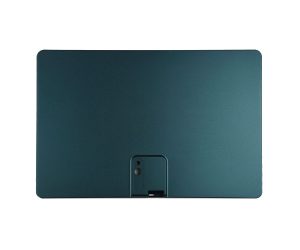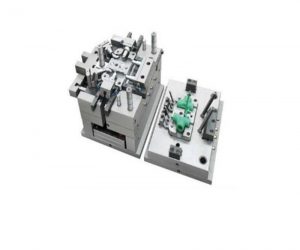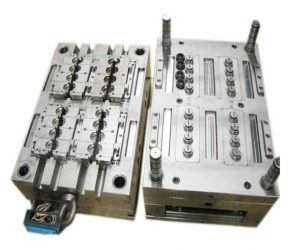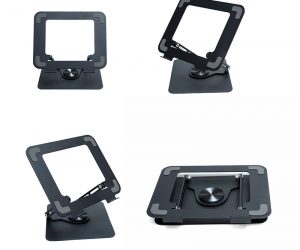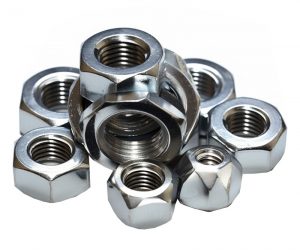The seemingly simple phrase "injection mold definition" belies a complex manufacturing process rife with nuanced intricacies. This isn't merely the creation of plastic parts; it's a symphony of pressure, temperature, and precision engineering, resulting in the ubiquitous plastic objects shaping our modern world. This exploration transcends a basic overview; we will dissect the process, its underlying mechanics, and the subtle artistry inherent in injection mold design.
Injection molding, at its core, is a high-pressure metamorphosis. Thermoplastic polymers, initially a chaotic mass of granules, are subjected to intense heat, transforming them into a viscous, molten state. This molten polymer, under immense pressure, is then forcefully injected into a meticulously crafted mold – the very heart of the process – where it rapidly cools and solidifies, mirroring the mold's intricate geometry. The precision isn't merely about shape; it encompasses tolerances measured in microns, demanding a level of control that pushes the boundaries of manufacturing technology.
The mechanics are far from straightforward. Consider the interplay of shear forces within the molten polymer as it's injected, the subtle variations in cooling rates across the mold's surface, and the complexities of gate design – the crucial point of entry for the molten material – which directly impacts the final product's integrity. A poorly designed gate can lead to flow inconsistencies, sink marks, or even catastrophic mold failure. The process parameters – injection pressure, melt temperature, holding time, and cooling rate – are not simply variables; they are interdependent factors requiring meticulous optimization for each specific polymer and mold design.
Injection molds themselves are not monolithic entities. The seemingly simple distinction between single-cavity and multi-cavity molds masks a vast landscape of design possibilities. Beyond cavity count, consider the complexities of core and cavity construction, the strategic placement of cooling channels (often involving intricate networks of micro-channels), and the integration of ejector pins – the mechanisms that delicately release the finished part from the mold. Each component is a critical element in a tightly coupled system, demanding sophisticated CAD/CAM design and precise manufacturing tolerances. Furthermore, the selection of mold materials – often hardened steels or specialized alloys – is crucial for durability and resistance to wear and tear under the relentless cycle of high-pressure injection and ejection.
The benefits extend beyond mere mass production. Injection molding's inherent repeatability ensures consistent quality across millions of parts, a critical factor in industries demanding stringent quality control. The ability to create complex geometries, intricate surface textures, and integrated features opens up a vast design space, enabling the creation of products that would be impossible to manufacture using alternative methods. Its applications are ubiquitous, spanning automotive components, medical devices, consumer electronics, packaging, and countless other sectors, underscoring its profound impact on our daily lives. The seemingly mundane plastic object is, in reality, a testament to the sophisticated engineering and manufacturing prowess at the heart of injection molding.
What is Injection Molding?
Injection molding is like baking a cake but with molten plastic instead of batter. You take this hot, melted material and shoot it into a mold that's shaped just like the thing you want to make. This mold is basically a hollow space that looks exactly like the final product.
Once the molten plastic is inside the mold, it gets pressed in under high pressure. Then, it cools down and hardens into the shape of the mold. After it solidifies, you pop the finished part out of the mold, and it's ready to go or be used for something else.
This process is super popular for making plastic stuff because it can create really detailed and precise shapes every time. Plus, you can make lots of parts quickly without wasting much material. It's great for things that need to be strong, last long, and stand up to heat, chemicals, and wear-and-tear.
How Does Injection Molding Work?
The injection molding process consists of four main stages: clamping, injection, cooling, and ejection.
- Clamping: The first stage is clamping, where the two halves of the mold (called the mold base and the mold core) are closed and secured by a clamping unit. The clamping unit applies a force to keep the mold closed during the injection stage.
- Injection: The second stage is injection, where the molten material (called the melt) is fed into the injection unit by a hopper. The injection unit consists of a screw that rotates and pushes the melt forward. The screw also acts as a heating element that melts the material as it moves along. The melt is then injected into the mold cavity through a nozzle at a high speed and pressure. The pressure helps to fill the mold cavity completely and avoid air bubbles or defects.
- Cooling: The third stage is cooling, where the melt inside the mold cavity cools down and solidifies into a solid part. The cooling time depends on several factors, such as the material type, thickness, shape, and temperature. The cooling system consists of channels that circulate water or oil around the mold to remove heat from the part.
- Ejection: The fourth stage is ejection, where the solidified part is ejected from the mold by an ejector system. The ejector system consists of pins or plates that push the part out of the mold cavity. The part is then separated from the runner system (the excess material that connects the part to the nozzle) and ready for use or further processing.
What is Injection Mold Definition?
So, injection molding is like this process where you take a melted material and shoot it into a mold that's shaped just like the thing you want to make. This mold can be made from metal, plastic, or other stuff. The material you inject could be plastic, metal, ceramic, or even glass. It's pretty versatile and used to make all sorts of things, like toys, car parts, medical devices, and packaging.
The cool part about injection molding is that it's super fast, doesn't cost much in labor, and gives you really precise results with not much waste. But, of course, nothing is perfect. The downside is that it can be expensive to set up initially, and you don't have much room to change the design once you've started. Plus, there are some environmental concerns with it.
What are the Types of Injection Molds?
What are the Types of Injection Molds?
Injection molding is a process of producing plastic parts by injecting molten plastic into a mold cavity. The mold cavity is shaped like the desired part and can be made of metal, ceramic, or other materials. Injection molding is widely used for mass production of plastic products, such as toys, containers, automotive parts, medical devices, and more.
There are different types of injection molds, depending on the design, material, and function of the part. Some of the common types are:
- Two-plate mold: This is the simplest and most common type of injection mold. It consists of two halves that separate along a parting line. The molten plastic is injected into the cavity through a sprue and a runner system. The sprue and the runner are attached to the part and need to be removed after molding.
- Three-plate mold: This is a more complex type of injection mold that consists of three plates that separate along two parting lines. The molten plastic is injected into the cavity through a sprue and a runner system that are located on a separate plate. The sprue and the runner are detached from the part and drop into a separate cavity after molding. This type of mold allows for more flexibility in the design and placement of the gates.
- Hot runner mold: This is a type of injection mold that uses heated channels to deliver the molten plastic directly into the cavity without using a cold runner system. The hot runner system reduces material waste and improves cycle time, but also increases the cost and complexity of the mold.
- Cold runner mold: This is a type of injection mold that uses unheated channels to deliver the molten plastic into the cavity. The cold runner system requires more material and cooling time, but also reduces the cost and maintenance of the mold.
- Insert mold: This is a type of injection mold that incorporates an insert, such as a metal or ceramic part, into the cavity. The molten plastic is injected around the insert, creating a composite part with enhanced properties or functions. Insert molding can reduce assembly time and improve quality and durability of the part.
- Overmold: This is a type of injection mold that produces a part with two or more layers of different materials. The first layer is molded in one mold cavity, then transferred to another mold cavity where the second layer is molded over it. Overmolding can create parts with different colors, textures, or functions.
These are some of the types of injection molds that are used for various applications. Injection molding is a versatile and efficient method of producing plastic parts with high quality and accuracy.
What are the Components of Injection Molds?
Injection molds are devices that are used to produce plastic parts by injecting molten plastic into a mold cavity. The mold cavity is shaped like the desired part and can have complex features and details. Injection molds consist of two main components: the mold base and the mold insert. The mold base is the frame that supports and aligns the mold insert. It also contains the ejector system that pushes the part out of the mold after it cools. The mold insert is the part that forms the cavity and contains the core, cavity, runner, gate, and vent. The core and cavity are the opposite halves of the mold that define the shape of the part. The runner is the channel that connects the injection nozzle to the gate. The gate is the opening that allows the molten plastic to enter the cavity. The vent is a small gap that allows air and gases to escape from the cavity during injection.
Injection molds are complex tools used in the injection molding process to produce a wide variety of plastic parts and products. These molds consist of several components that work together to form the final product with precision and consistency. Understanding the different components of injection molds is essential for optimizing the molding process and ensuring the production of high-quality plastic parts.
- Mold Cavity: The mold cavity is the primary component of the injection mold where the molten plastic material is injected to form the final product. It is a precisely machined cavity that mirrors the desired shape and features of the plastic part to be manufactured.
- Sprue: The sprue is the channel through which the molten plastic material is introduced into the mold cavity from the injection unit of the molding machine. It connects the runner system to the mold cavity and allows the molten plastic to flow into the mold.
- Runner System: The runner system is a network of channels that distribute the molten plastic from the sprue to multiple mold cavities, especially in multi-cavity molds. The runner system plays a crucial role in ensuring a balanced and consistent flow of plastic material to each cavity.
- Gates: The gates are the openings through which the molten plastic enters the mold cavity from the runner system. They control the flow of plastic and prevent premature solidification, ensuring that the mold cavity is completely filled.
- Ejector Pins: Ejector pins are responsible for ejecting the molded part from the mold cavity after the cooling process is complete. They are positioned on the ejector plate and extend into the mold cavity to push the part out once it has solidified.
- Cooling System: The cooling system is an integral component of injection molds, as it helps regulate the temperature of the mold during the molding process. Proper cooling is crucial for achieving consistent part quality and cycle times.
- Core: The core is the counterpart to the mold cavity, and together, they form the final shape of the plastic part. The core is typically mounted on the fixed half of the mold and is responsible for defining the inner features and details of the part.
- Guide Pins and Bushings: Guide pins and bushings ensure proper alignment and positioning of the two mold halves during mold closure. They aid in maintaining the accuracy and consistency of the molding process.
- Sprue Puller: The sprue puller is a mechanical device that removes the sprue from the molded part. It is designed to separate the sprue from the part after ejection, reducing waste and improving overall part quality.
- Venting System: The venting system allows trapped air and gases to escape from the mold cavity during the injection molding process. Proper venting helps prevent defects like air traps and burn marks on the molded part.
In conclusion, the components of injection molds work in harmony to produce high-quality plastic parts with precision and efficiency. Each component has a specific function, from introducing the molten plastic to the mold cavity, guiding the mold halves, ejecting the parts, and regulating the cooling process. Understanding the design and function of these components is essential for optimizing the injection molding process and ensuring the production of consistent and reliable plastic parts. Manufacturers must carefully consider the selection and design of these components to achieve the desired part quality and optimize the overall molding operation.
What are the Benefits of Injection Molding?
Injection molding transcends mere manufacturing; it's a transformative process, a controlled metamorphosis of raw material into precisely defined geometries. Its efficacy stems not merely from efficiency, but from a complex interplay of thermodynamic principles, material science, and sophisticated automation. Unlike subtractive manufacturing techniques, injection molding's power lies in additive creation, yielding parts with unparalleled precision and repeatability.
The purported "high efficiency" is not simply a matter of speed, but a consequence of optimized process parameters. Continuous operation, while seemingly straightforward, necessitates intricate control systems capable of mitigating thermal fluctuations, pressure gradients, and the inherent viscoelastic complexities of molten polymers. The resultant economies of scale are profound, dramatically reducing unit costs and enabling mass production with minimal waste – a testament to the process's inherent efficiency.
Claims of "high quality" are substantiated by the inherent precision of the molding process. Dimensional tolerances are often measured in micrometers, a level of accuracy unattainable by many alternative methods. Furthermore, the ability to create intricate internal geometries and surface textures, previously confined to the realm of specialized machining, opens up a vast design space, pushing the boundaries of what's structurally feasible. This precision extends beyond simple geometry; it encompasses consistent material properties, minimizing variations in density, crystallinity, and molecular orientation.
The "high versatility" of injection molding is a consequence of its adaptability to a diverse range of materials. While plastics dominate, the process is not limited to thermoplastics; it extends to thermosets, elastomers, and even certain metal alloys through specialized techniques. The ability to incorporate fillers, reinforcements, and colorants further expands the material palette, allowing for fine-tuning of mechanical, thermal, and aesthetic properties. This versatility, coupled with the ability to produce parts with complex geometries, renders injection molding a uniquely powerful manufacturing technique.
Finally, the assertion of "high sustainability" requires nuanced consideration. While injection molding inherently reduces material waste compared to subtractive methods, its environmental impact is inextricably linked to the choice of materials and energy sources. The use of recycled materials and the implementation of energy-efficient molding machines are crucial for minimizing the overall environmental footprint. However, the potential for closed-loop recycling systems and the inherent efficiency of the process offer a compelling argument for its position as a relatively sustainable manufacturing solution. In conclusion, injection molding's success rests not on simplistic claims, but on a sophisticated interplay of engineering principles and material science, yielding a manufacturing process of exceptional power and versatility.
